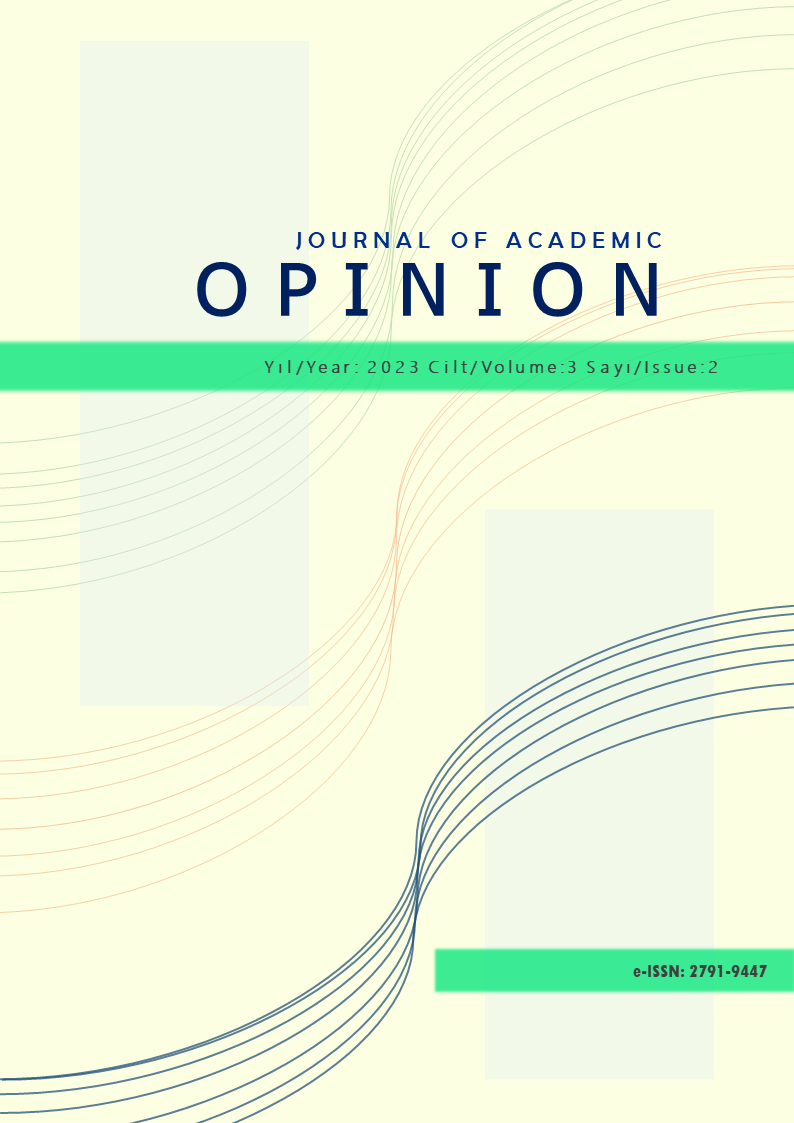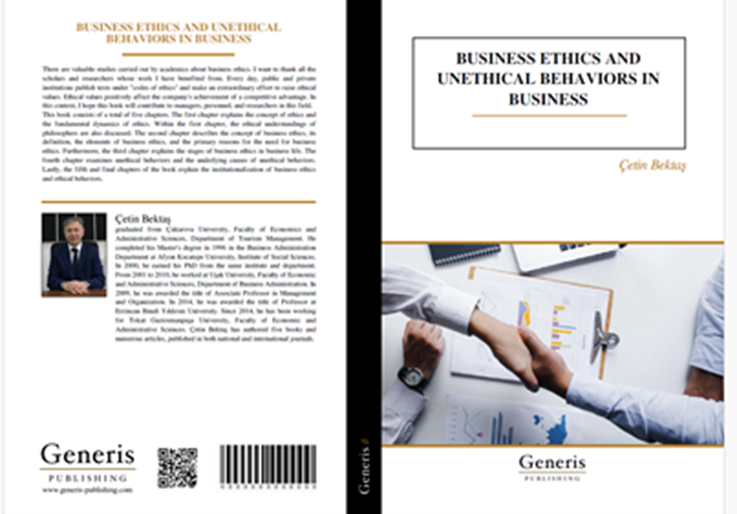Şokların Enflasyon Üzerinde Kalıcı Etkisinin Olup Olmadığına İlişkin Bir İnceleme: Danimarka, İsveç ve Norveç Örneği
DOI:
https://doi.org/10.5281/zenodo.10444377Anahtar Kelimeler:
Birim Kök, Enflasyon, ŞoklarÖzet
Bu çalışmanın amacı Danimarka, İsveç ve Norveç için ayrı ayrı hesaplanan enflasyon serisinin şoklardan kalıcı olarak etkilenip etkilenmediğini ortaya koymaktır. Veri mevcudiyetine bağlı olarak analiz dönemi Danimarka için 1968–2022 dönemini, İsveç için 1956–2022 dönemini ve Norveç için 1951–2022 dönemini kapsamaktadır. Çalışmada yıllık enflasyon verileri dikkate alınmıştır. Yıllık enflasyon verilerinin tercih edilmesinin nedeni mevsimsel etkilerden kaçınmaktır. Norveç’e ait enflasyon verileri için Dickey ve Fuller (1979) tarafından önerilen birim kök testinin sonucu dikkate alınmıştır. İsveç’e ait enflasyon verileri için Carrion-i-Silvestre ve Sansó (2007) tarafından önerilen durağanlık testinin sonucu dikkate alınmıştır. Danimarka’ya ait enflasyon verilerine Kapetanios vd. (2003) tarafından önerilen birim kök testi, Kruse (2011) tarafından tavsiye edilen birim kök testi ve Güriş ve Güriş (2022) tarafından önerilen birim kök testi uygulanmıştır. Ampirik analiz neticesinde Danimarka ve Norveç için ayrı ayrı hesaplanan enflasyon serisinin şoklardan kalıcı olarak etkilenmediği (birim kök içermediği) söylenebilir. Yapısal kırılmaların dikkate alınması durumunda İsveç’e ait enflasyon serisinin de birim kök içermediği belirtilebilir. Elde edilen bulgulara dayalı olarak Danimarka’da, İsveç’te ve Norveç’te enflasyona yönelik küçük şokların etkisini düşürmeye dönük müdahalelerde bulunulmaması önerilmektedir.
Referanslar
Arize, A. C. and Malindretos, J. (2012). Nonstationarity and Nonlinearity in Inflation Rate: Some Further Evidence. International Review of Economics & Finance, 24, 224–234. https://doi.org/10.1016/j.iref.2012.02.002.
Bolat, S., Tiwari, A. K., and Kyophilavong, P. (2017). Testing the Inflation Rates in MENA Countries: Evidence from Quantile Regression Approach and Seasonal Unit Root Test. Research in International Business and Finance, 42, 1089–1095. https://doi.org/10.1016/j.ribaf.2017.07.043.
Boyd, J. H., Levine, R., and Smith, B. D. (2001). The Impact of Inflation on Financial Sector Performance. Journal of Monetary Economics, 47(2), 221–248. https://doi.org/10.1016/S0304-3932(01)00049-6.
Burdekin, R. C. K., Goodwin, T., Salamun, S., and Willett, T. D. (1994). The Effects of Inflation on Economic Growth in Industrial and Developing Countries: Is There a Difference?. Applied Economics Letters, 1(10), 175–177. https://doi.org/10.1080/135048594357952.
Caporale, T. and Paxton, J. (2011). From Debt Crisis to Tequila Crisis: Inflation Stationarity Through Mexico's Turbulent Decades. Applied Economics Letters, 18(16), 1609–1612. https://doi.org/10.1080/13504851.2011.554365.
Carlsen, F. (2000). Unemployment, Inflation and Government Popularity—Are There Partisan Effects?. Electoral Studies, 19(2–3), 141–150. https://doi.org/10.1016/S0261-3794(99)00044-X.
Carrion-i-Silvestre, J. L. and Sansó, A. (2005). The KPSS Test with Two Structural Breaks. https://www.researchgate.net/profile/AndreuSanso/publication/24064952_The_KPSS_test_with_two_structural_breaks/links/09e4150cae2d27831a000000/The-KPSS-test-with-two-structural-breaks.pdf (Erişim Tarihi: 28.07.2023).
Carrion-i-Silvestre, J. L. and Sansó, A. (2007). The KPSS Test with Two Structural Breaks. Spanish Economic Review, 9(2), 105–127. https://doi.org/10.1007/s10108-006-9017-8.
Chang, T., Ranjbar, O., and Tang, D. P. (2013). Revisiting the Mean Reversion of Inflation Rates for 22 OECD Countries. Economic Modelling, 30, 245–252. https://doi.org/10.1016/j.econmod.2012.09.018.
Cuestas, J. C. and Harrison, B. (2010). Inflation Persistence and Nonlinearities in Central and Eastern European Countries. Economics Letters, 106(2), 81–83. https://doi.org/10.1016/j.econlet.2009.10.006.
Culver, S. E. and Papell, D. H. (1997a). Is There a Unit Root in the Inflation Rate? Evidence from Sequential Break and Panel Data Models. Journal of Applied Econometrics, 12(4), 435–444. https://doi.org/10.1002/(SICI)1099-1255(199707)12:4<435::AID-JAE430>3.0.CO;2-1.
Culver, S. and Papell, D. H. (1997b). Is There a Unit Root In the Inflation Rate? Evidence from Sequential Break and Panel Data Models. I. Versiyon. Journal of Applied Econometrics (Veri Seti). Erişim Adresi: https://doi.org/10.15456/jae.2022313.1256740089 (Erişim Tarihi: 29.07.2023).
Dickey, D. A. and Fuller, W. A. (1979). Distribution of the Estimators for Autoregressive Time Series with a Unit Root. Journal of the American Statistical Association, 74(366a), 427–431. https://doi.org/10.1080/01621459.1979.10482531.
Dornbusch, R. (1976). Expectations and Exchange Rate Dynamics. Journal of Political Economy, 84(6), 1161–1176. https://doi.org/10.1086/260506.
Eichhorst, W., Thode, E., and Winter, F. (2004). Benchmarking Deutschland 2004: Arbeitsmarkt und Beschäftigung Bericht der Bertelsmann Stiftung. Springer-Verlag, Berlin, Heidelberg.
Elliott, G., Rothenberg, T. J., and Stock, J. H. (1996). Efficient Tests for an Autoregressive Unit Root. Econometrica, 64(4), 813–836. https://doi.org/10.2307/2171846.
Güriş, S. and Güriş, B. (2022). GLS Detrending in Nonlinear Unit Root Test. Communications in Statistics-Simulation and Computation, 51(3), 1096–1102. https://doi.org/10.1080/03610918.2019.1662442.
Harvey, D. I., Leybourne, S. J., and Xiao, B. (2008). A Powerful Test for Linearity when the Order of Integration is Unknown. Studies in Nonlinear Dynamics & Econometrics, 12(3). https://doi.org/10.2202/1558-3708.1582.
Heyert, A. and Weill, L. (2023). Never Forget, Never Forgive: The Impact of Inflation on Trust in Banks. Applied Economics. https://doi.org/10.1080/00036846.2023.2210829.
International Monetary Fund (2023). International Financial Statistics (Veri Tabanı). Erişim Adresi: https://data.imf.org/?sk=4c514d48-b6ba-49ed-8ab9-52b0c1a0179b&sid=1390030341854 (Erişim Tarihi: 27.07.2023).
Kapetanios, G., Shin, Y., and Snell, A. (2003). Testing for a Unit Root in the Nonlinear STAR Framework. Journal of Econometrics, 112(2), 359–379. https://doi.org/10.1016/S0304-4076(02)00202-6.
Kim, D. H. and Lin, S. C. (2023). Income Inequality, Inflation and Financial Development. Journal of Empirical Finance, 72, 468–487. https://doi.org/10.1016/j.jempfin.2023.04.008.
Kruse, R. (2011). A New Unit Root Test Against ESTAR Based on a Class of Modified Statistics. Statistical Papers, 52(1), 71–85. https://doi.org/10.1007/s00362-009-0204-1.
Lai, K. S. (1997). On the Disparate Evidence on Trend Stationarity in Inflation Rates: A Reappraisal. Applied Economics Letters, 4(5), 305–309. https://doi.org/10.1080/758532598.
Lee, C. F. and Tsong, C. C. (2009). Bootstrapping Covariate Stationarity Tests for Inflation Rates. Economic Modelling, 26(6), 1443–1448. https://doi.org/10.1016/j.econmod.2009.07.017.
Lee, C. F. and Tsong, C. C. (2012). Bootstrapping Covariate Unit Root Tests: An Application to Inflation Rates. Bulletin of Economic Research, 65(s1), s165–s174. https://doi.org/10.1111/j.1467-8586.2012.00437.x.
Lee, H. Y. and Wu, J. L. (2001). Mean Reversion of Inflation Rates: Evidence from 13 OECD Countries. Journal of Macroeconomics, 23(3), 477–487. https://doi.org/10.1016/S0164-0704(01)00174-4.
Mandeya, S. M. T. and Ho, S. Y. (2021). Inflation, Inflation Uncertainty and the Economic Growth Nexus: An Impact Study of South Africa. MethodsX, 8. https://doi.org/10.1016/j.mex.2021.101501.
Mogensen, K. (2013). Visualizing a Mass Murder: The Portraits of Anders Bering Breivik in Danish National Dailies. Journal of Mass Media Ethics, 28(1), 64–67. https://doi.org/10.1080/08900523.2013.755083.
Mohseni, M. and Jouzaryan, F. (2016). Examining the Effects of Inflation and Unemployment on Economic Growth in Iran (1996–2012). Procedia Economics and Finance, 36, 381–389. https://doi.org/10.1016/S2212-5671(16)30050-8.
Narayan, P. K. (2014). Response of Inflation to Shocks: New Evidence from Sub-Saharan African Countries. Economic Modelling, 36, 378–382. https://doi.org/10.1016/j.econmod.2013.10.016.
Obradović, S. and Lojanica, N. (2022). Are Inflation Rates Stationary in the Western Balkan Countries? Evidence from Unit Root Tests. Politická Ekonomie, 70(4), 421–439. https://doi.org/10.18267/j.polek.1362.
Österholm, P. (2004). Killing Four Unit Root Birds in the US Economy with Three Panel Unit Root Test Stones. Applied Economics Letters, 11(4), 213–216. https://doi.org/10.1080/13504850410001674821.
Poddig, T., Dichtl, H., and Petersmeier, K. (2008). Statistik, Ökonometrie, Optimierung: Methoden und ihre praktischen Anwendungen in Finanzanalyse und Portfoliomanagement. Uhlenbruch Verlag, Bad Soden/Ts.
Romero-Ávila, D. and Usabiaga, C. (2009). The Hypothesis of a Unit Root in OECD Inflation Revisited. Journal of Economics and Business, 61(2), 153–161. https://doi.org/10.1016/j.jeconbus.2008.02.001.
Schira, J. (2021). Statistische Methoden der VWL und BWL: Theorie und Praxis. Pearson Deutschland, München.
Si, D. K. and Li, X. L. (2018). Mean Reversion of Inflation Rates in Seven Eastern European Countries: An Application of a Fourier Quantile Unit Root Test. The Journal of International Trade & Economic Development, 27(2), 145–167. https://doi.org/10.1080/09638199.2017.1350200.
Tsong, C. C. and Lee, C. F. (2010). Testing for Stationarity of Inflation Rates with Covariates. South African Journal of Economics, 78(4), 344–362. https://doi.org/10.1111/j.1813-6982.2010.01251.x.
Tsong, C. C. and Lee, C. F. (2011). Asymmetric Inflation Dynamics: Evidence from Quantile Regression Analysis. Journal of Macroeconomics, 33(4), 668–680. https://doi.org/10.1016/j.jmacro.2011.08.003.
Tsong, C. C., Lee, C. F., and Lee, C. C. (2012). A Revisit to the Stationarity of OECD Inflation: Evidence from Panel Unit-Root Tests and the Covariate Point Optimal Test. The Japanese Economic Review, 63(3), 380–396. https://doi.org/10.1111/j.1468-5876.2012.00560.x.
Winker, P. (2017). Empirische Wirtschaftsforschung und Ökonometrie. Springer-Verlag, Berlin.
Yoon, G. (2003). The Time Series Behaviour of Brazilian Inflation Rate: New Evidence from Unit Root Tests with Good Size and Power.
Applied Economics Letters, 10(10), 627–631. https://doi.org/10.1080/1350485032000133309.
İndir
Yayınlanmış
Nasıl Atıf Yapılır
Sayı
Bölüm
Lisans
Telif Hakkı (c) 2023 Journal of Academic Opinion

Bu çalışma Creative Commons Attribution 4.0 International License ile lisanslanmıştır.





